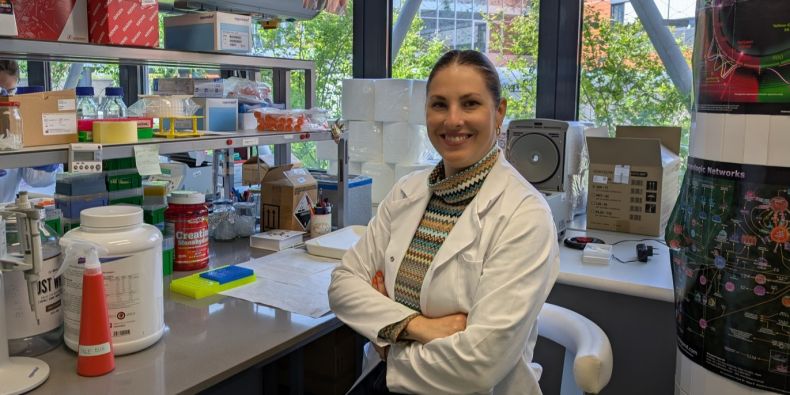A new study which senior researcher Valentina Lacovich Strašil from CEITEC Masaryk University started during her previous postdoc at the International Clinical Research Centre, St. Anne’s University Hospital, Brno, Czech Republic (ICRC-FNUSA) shows that a protein known as amyloid precursor protein (APP), which is associated with Alzheimer’s disease, is essential for the brain to respond to injury. Laboratory mice lacking APP were unable to activate normal repair mechanisms following trauma. The findings may help better understand disrupted regenerative processes in Alzheimer’s disease.
APP, a molecule best known for its connection to Alzheimer’s pathology, has now been shown to be crucial for launching the brain’s repair response. The Czech research team in collaboration with partners from the USA, and the United Kingdom, found that the developmental absence of this protein prevents the activation of the brain’s normal molecular repair mechanisms. The study was published in the prestigious journal Alzheimer’s & Dementia.
In their study, scientists compared normal/wild-type mice with genetically modified mice that lacked APP. Both groups underwent a controlled cortical brain injury that mimicked traumatic brain damage. Ten weeks after the injury, normal mice showed activated genetic and protein-level repair processes, while APP-deficient mice displayed no such response — their brains failed to react to the injury at all.
Surprisingly, the brains of APP-deficient mice showed gene expression patterns similar to those observed in healthy mice only after injury. According to the authors, this means that the absence of APP pushes the brain into a “permanent repair mode” that paradoxically prevents it from responding to new damage.
“We found that if APP is missing from early development, the brain is unable to adapt to injury,” says the study’s first author Valentina Lacovich Strašil from CEITEC Masaryk University. “From a gene expression perspective, such a brain appears as if it had already been injured — and therefore doesn’t react when actual trauma occurs.”
The changes were observed both in gene activation and in the production of proteins involved in cell repair. The most significant differences were related to genes responsible for ribosome formation (the cell’s protein factories) and neural signal transmission. The APP-deficient brain also appeared underdeveloped — it failed to complete the full developmental program seen in healthy individuals.
The corresponding author of the study, neurologist and neuroscientist Gorazd Bernard Stokin (ICRC-FNUSA, Palacký University in Olomouc and Royal Gloucester Hospital, Gloucester, UK adds: “These results may help us understand why the brain sometimes fails to heal properly after trauma. They also suggest that certain neurodegenerative processes, including those in Alzheimer’s disease, may be linked to disrupted regulatory functions of APP.”
This study offers a new perspective on the role of APP — not only as a source of pathological fragments that accumulate in the brains of Alzheimer’s patients, but also as a critical regulator of gene expression and protein synthesis. The finding that APP deficiency blocks the brain’s ability to respond to damage opens up new avenues for understanding the mechanisms leading to progressive neural dysfunction in Alzheimer’s disease. Understanding these regulatory pathways may, in the future, contribute to the development of more targeted therapeutic strategies.
Further information can be found on the CEITEC MU website.
